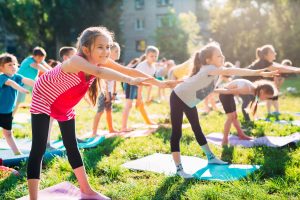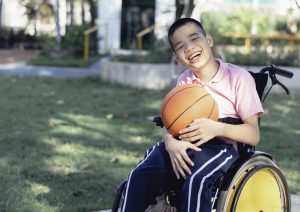When the initial shock of the COVID-19 lockdown passed, the attention of our sector turned to contemplating what sport and physical activity would look like in an era of public health restrictions. The development and implementation of return to play plans, driven by a commitment to sport organizations’ members and the practicality of long-term sustainability, is a task perhaps without parallel. SIRC sat down (virtually, of course!) with four sport leaders to discuss their return to play approach and key learnings to date. What emerged were five key themes focused on returning to play…better.
1. Safety – the #1 priority
It should come as no surprise that the four leaders identified the safety of staff, participants, and other community members as their number one priority. “We made it clear that compliance with public health guidelines was non-negotiable,” said Stuart McReynolds, CEO of the Abilities Centre, a community hub in Whitby providing universally designed programs and services to support health and wellbeing, social inclusion and economic participation for persons of all ages and abilities. “But we realized that there were tonnes of things that were negotiable – class times, set up, the streamlining of intake processes – where we could be innovative and create the best experience for our members.” Based on public health guidance, organizations developed a range of protocols, practices and supports. For WinSport, the not-for-profit community-based organization that owns and operates Canada Olympic Park in Calgary, this meant daily health screening and temperature checks when programming started in July. Jennifer Konopaki, WinSport’s Executive Director, Sport, reflected, “Some parents may have thought this was over the top; but others appreciated the efforts. In implementing the public health guidelines, it was important that WinSport make decisions in the interests of all our staff and guests.”
All leaders spoke to the considerable time and expertise required to understand and apply public health guidance. Consultation with local and provincial/territorial health authorities helped ensure return to play plans were compliant. For PHE Canada, the national voice for quality physical and health education opportunities and healthy learning environments, providing support to their national network of physical and health education teachers meant understanding the different expectations of health authorities and school districts across the country. To boost her organization’s capacity now and for the future, Amy Walsh, Executive Director of Hockey Nova Scotia, described the creation of a Chief Medical Officer position on their Board of Directors. This new position provided essential expertise during the development of return to play guidelines for Hockey Nova Scotia’s member associations, and boosts organizational capacity long-term to address key issues such as concussion prevention and management.
2. Commitment to a quality experience

Creating quality sport experiences given public health restrictions may seem like a daunting task. However, the sport leaders SIRC spoke with approached return to play with a blend of creativity, innovation, and a commitment to values-based sport. For example, Tricia Zakaria, Director of Programs and Education at PHE Canada, spoke about the need for physical educators and program leaders to be creative with places and programming, such as the use of alternative spaces (e.g. outdoor areas, little-used hallways and multi-use space) and activities requiring little or no equipment. “Driving PHE Canada’s support to our members was a commitment to providing practical ideas and solutions so teachers would feel confident delivering quality programs in this ‘new reality.’” The sport leaders also spoke about new innovations, from ongoing virtual programs, to cameras and live streaming so families can watch games from home, to the development of customer apps to support diverse program delivery.
Beyond programming logistics, the sport leaders described quality experience from a relationship perspective. Staff training built skills to support the social-emotional wellbeing of participants and staff, ranging from new relationship-building strategies that respect public health measures (e.g. with fist pumps, smiles and positive body language), to increasing awareness and empathy relating to the impact of the pandemic on physical and mental health. McReynolds described the Abilities Centre’s participant-centred approach, and the use of staffed contact points (e.g. exterior doors, registration desk, program area) to check in with members and ensure they feel safe and comfortable. Early program feedback from Hockey Nova Scotia revealed that the new small group programming supported stronger skill development opportunities and relationships amongst teammates and coaches.
3. Stakeholder communication and engagement

For the leaders, communicating with staff, volunteers, and – most importantly – members, has been essential. This included email updates, virtual town halls, surveys, and consultation groups. Shortly after lockdown, PHE Canada began hosting monthly cross-Canada check-ins, providing an opportunity for their network “to connect, worry and problem solve together.” Similarly, Hockey Nova Scotia hosted bi-weekly calls with association members that grew to 170+ regular participants. Walsh said the organization has benefited immensely from the insight and advice from the 50+ members involved directly in return to play committees. McReynolds spoke about the Abilities Centre’s approach to co-designing and co-producing their return to play plan, and the value of taping into staff (of whom 30% are persons with disabilities) in the testing and refinement of the Centre’s public health protocols and program models.
Stakeholder communication and engagement was particularly important as the organizations prepared to open their doors. First, it ensured staff knew and bought into the public health protocols. McReynolds said, “The public health training and communication with staff created a sense of pride that they work with an organization that had invested resources in ensuring staff and members felt safe.” Second, communication with members ensured they knew what to expect before arriving on site. Konopaki described how WinSport’s “know before you go” guidance for parents and summer camp participants demystified protocols and ensured families felt confident returning to play.
4. Supporting the broader community
Leaders also connected with external organizations and networks to share and learn from promising practices and evidence-based approaches. For example, Walsh participated in regular calls with the executive directors of other provincial ice sport organizations, and the Recreation Facility Association of Nova Scotia; Konopaki connected regularly with the Calgary Recreation Leadership Network; and McReynolds was dialed into Canadian and international partner networks in both the sport and accessibility sectors. Given the challenges everyone is facing, McReynolds commented that it was refreshing to see the open and transparent sharing happening between organizations with the intention of supporting everyone’s success. He said, “Now is the time to throw out the competitiveness that sometimes exists between organizations and share the information so everyone comes back stronger.” Konopaki commented, “It’s OK to not have the answers – tap into your networks to ask questions and access the expertise and insight you need.” Walsh spoke about the new relationships that were built that will continue to pay dividends, long-after the pandemic as ended.
5. An intentional approach

The most important element of the return to play approaches described by the sport leaders was a slow, intentional approach. For example, when WinSport opened its doors in early July, it was with one major offering – mountain bike camps. This is in stark contrast to their usual offering of 50+ camps. “Our team decided the best approach was to start small and not be a hero,” Konopaki said. “Mountain biking, delivered outside with participants’ own equipment, built on our strengths and gave us an opportunity to open our doors and refine our processes in a controlled way.” Similarly, McReynolds, who opened the Abilities Centre doors in late August, said, “We took a long-term perspective and avoided making any rash decisions – we knew getting it wrong could have huge impacts.”
Underpinning the leaders’ intentional approach was a sincere commitment to returning to play…better – more impactful, more inclusive, and more equitable. Konopaki described reopening as an opportunity to “disrupt the status quo,” recalibrating, reprioritizing, and in some cases stopping services delivered by WinSport. At Hockey Nova Scotia, Walsh used the months since lockdown to evaluate services, pilot new offerings, and update processes – such as building a new website for improved communication and encouraging multiple registration points to reduce commitment for the youngest hockey players and their families. For PHE Canada, Zakaria spoke to the creation of safe and equitable school communities that support children’s basic needs. For McReynolds, the opportunity to implement accessible and inclusive design and programming has never been better. Driving decision-making with their organizational values and the priorities of their members, these leaders are committed to returning to play better, providing an inspiring example for others.
SIRC thanks the leaders that contributed to this blog:
- Jennifer Konopaki, Executive Director, Sport, WinSport (Calgary, AB)
- Stuart McReynolds, President & CEO, Abilities Centre (Whitby, ON)
- Amy Walsh, Executive Director, Hockey Nova Scotia (Halifax, NS)
- Tricia Zakaria, Director, Programs & Education, PHE Canada (Ottawa, ON)
Recommended Resources
PHE Canada’s PHE Learning Centre and Return to School PHE
WinSport’s Safety Protocols and Summer Camp FAQs